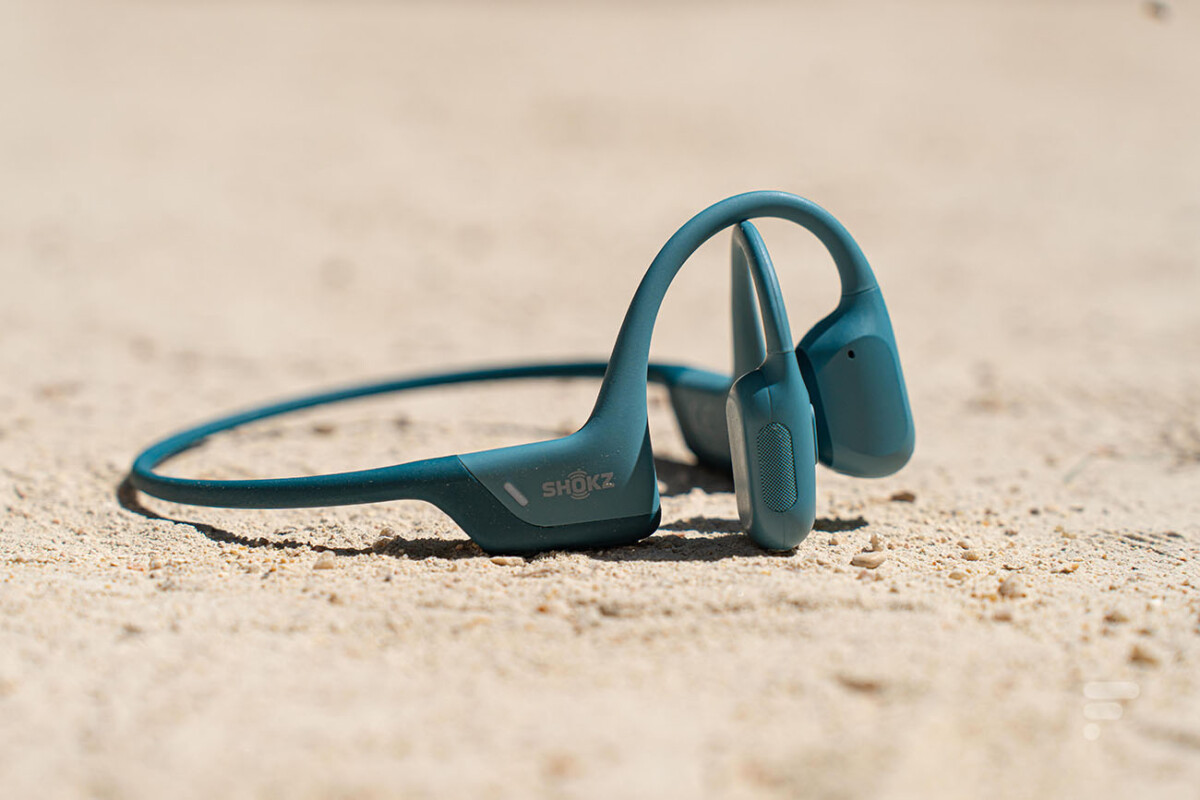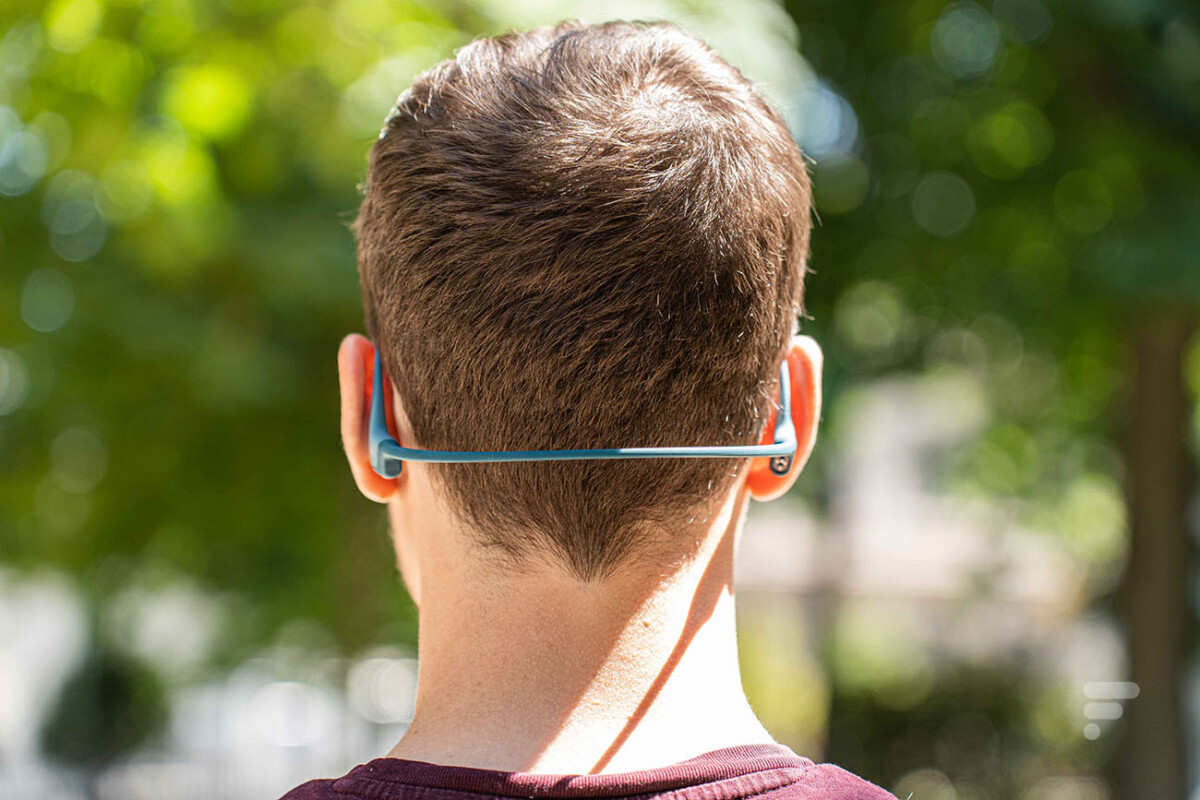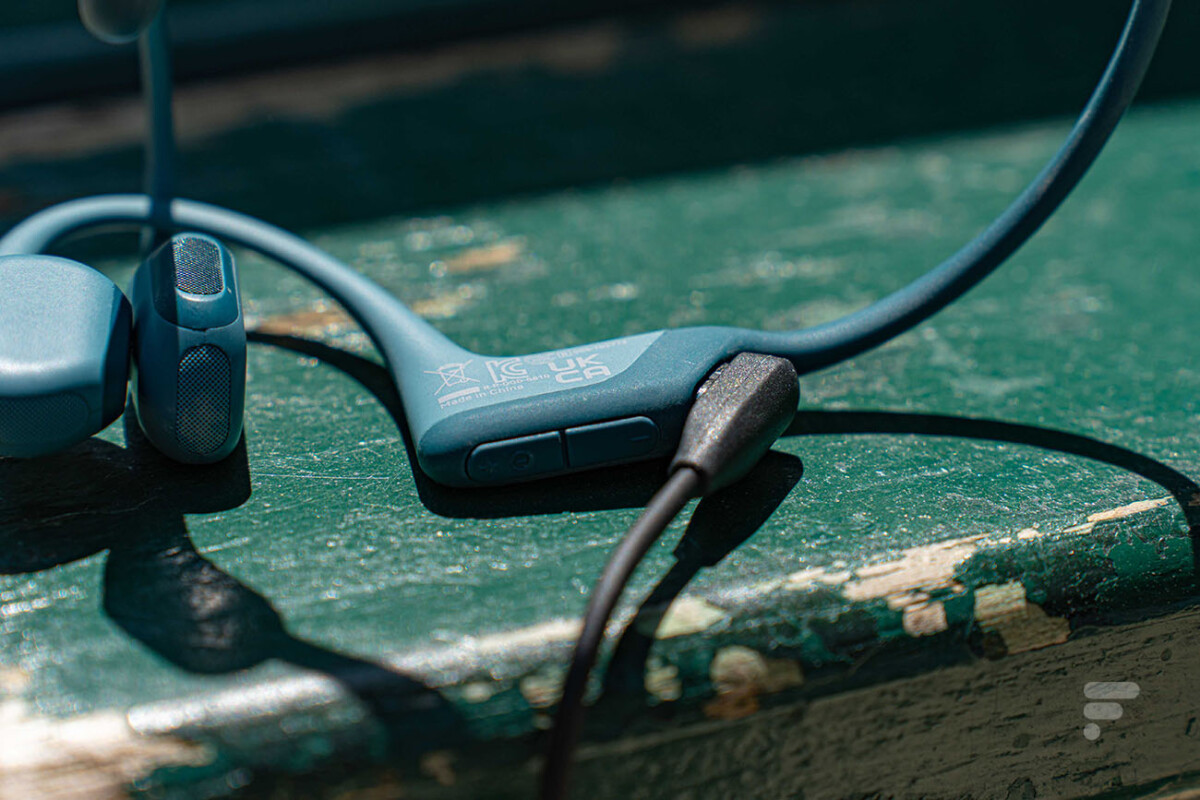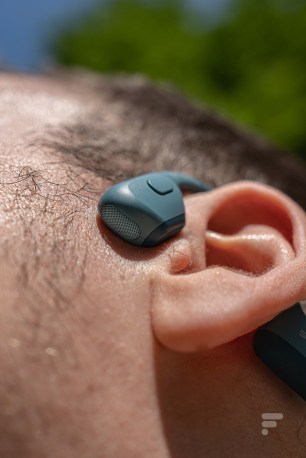For a month, I used the Shoks OpenRun Pro Bone Conduction Headphones in my workouts. And I still have trouble understanding the value of this technology.
In the field of audio, we are familiar with in-ear headphones or traditional headphones, offered by manufacturers for decades. But a new type of product emerged about ten years ago: bone conduction headphones. This type of helmet does not use traditional transducers – dynamic or balanced armature – but a system of vibration waves on the temples in order to propagate the sound through the skull to the back of the eardrum.
For ten years, Shokz – previously known as AfterShokz – has been the standard bearer of this headphone technology, but others have followed, such as Philips, Xiaomi, Creative or JVC.
I had already had the opportunity to try this type of helmet several years ago and as much to announce it from the start: I was far from being conquered. It must be said that the very nature of this type of headset poses many problems for listening to music files while enjoying the best possible quality. Between the rendering of bass and treble particularly starved and the lack of passive isolation, I struggled to see the slightest interest in this type of helmet. But it is necessary to underline a point: I was clearly not the target of these apparatuses primarily intended for the sportsmen.

Since this first try, I have taken up running diligently, if only to test connected watches and to improve my times. Three to four times a week, summer and winter, you can therefore see me running in the streets or parks of Paris, generally with a pair of wireless headphones in my ears. When Shokz offered me to test its OpenRun Pro, the brand’s top-of-the-range model, I put my prejudices aside and gave the product a chance again for a month.
Better sound quality, but still not that
The main concern with bone conduction headphones, as we have already touched on quickly, is their sound quality. In fact, the sound waves do not propagate through the air, but directly through the bones of the skull to reach the back of the eardrum. However, if the air is adapted to the propagation of all the audible frequencies, this is not the case of the bones.

Bone conduction headphones will therefore be suitable for reproducing mid frequencies – and therefore voices – but will have much more difficulty with bass and treble which propagate less well in the skull. For bass, for example, this would require the bones to vibrate much more significantly, which would then cause some discomfort. For the treble, this would mean making them vibrate at a much higher frequency, which again is not good for comfort of use. Above all, the skin itself already dampens the vibrations to a large extent, and therefore the sound volume.
For its OpenRun Pro helmet, Shokz found a solution by cheating a little. In fact, unlike the brand’s other headphones, this isn’t a bone conduction headphone outright. The manufacturer has integrated, in addition to the vibration motors, several classic dynamic transducers – behind the loudspeaker grilles – which are there precisely to support bone conduction and compensate for the weakness of the bass and treble. What to offer a better rendering, even if we are light years away from the sound quality offered by headphones or traditional headphones.
This at least has the merit of allowing you to listen to music during your sports sessions and of not being limited to content highlighting mediums, such as podcasts. Still, the sound quality is far from being the priority when exercising and this defect can easily be forgiven.
Undeniable comfort and autonomy
If sound quality isn’t the main draw of bone conduction headphones — not to say it’s their biggest deterrent — there must be a reason for their growing popularity. Not only do I see more and more of my peers wearing them during their training sessions, but even on specialized YouTube channels – I plunged headfirst into the burrow of running – more and more runners prefer them to wireless headphones or traditional headsets.
Yet wireless headphones were already a real leap forward compared to wired models whose cables, pulled by gravity, tended to dislodge the headphones from the ears. But by using these bone conduction headphones more and more, I realized that they were the worthy heirs of the neckband headphones that we knew five to ten years ago.

To take the case of the Shokz OpenRun Pro, it is a headset that is both around the neck and around the ear. The headband is semi-rigid and does not hit against the neck. For their part, the ear cups are easily positioned around the outer ear to secure themselves well. In fact, we therefore have, even during intense exercises, with a lot of movement, a helmet that will not budge an inch. And this is the main interest of this format: unlike wireless headphones which are only secured by fins, a stem or the in-ear format, I never felt the need to replace the bone conduction headphones during my outings. And without having to touch it, no pressing by mistake on the touch zones that will make me change tracks in the middle of the VMA session when I’m supposed to be concentrating on my session.


Another advantage of this technology for the most resistant to headphones: the ear canal is not blocked and you will therefore feel absolutely no discomfort during your exercises.

On top of that, the Shokz OpenRun Pro is a pretty well-designed headset for its ergonomics, with a single button to manage playback at the left temple — one click to pause, two for next track, three for backspace — and two volume keys placed behind the right ear. The helmet also offers excellent autonomy with ten hours announced. Charging is easy with a proprietary cable with a magnetic connector.
No passive isolation, even less noise reduction
There remains one point in particular that bothers me and has regularly prompted me, during this month of use, to nevertheless turn to the Bose QuietComfort Earbuds II during my workouts. Bone conduction headphones are, by definition, headphones without any passive isolation.
Without even mentioning active noise reduction, the headphones leave your ear canal completely empty. It’s a little disturbing at first, but you can hear his music as well as the outside sounds. At least, provided you are in a relatively calm environment.

To resume my personal case, I live in Paris and, when I run, it’s in the Bois de Vincennes. But I still have to go to the woods, a path that generally lasts about fifteen minutes. During this period of time, I therefore run on the sidewalk of streets with rather dense traffic and as much to say that, even with the volume pushed to the maximum, the headphones of Shokz struggled to follow. It’s very simple, I completely missed hours of some of my podcasts since I heard the noise of vehicles much more than that of emissions. As for using the headphones in an even noisier context, such as on an airplane or public transport, don’t even think about it.
Of course, these defects are only valid at first sight for people living in town, or at least in a noisy setting. In the countryside or in the mountains, if you run in the middle of nature and far from any noise pollution, bone conduction can prove to be more useful… and even more. Because that’s the whole paradox of this type of helmet: if they leave the ears clear, it’s good to stay aware of your environment, especially in the event of a vehicle nearby. But if you have too much traffic nearby, then it’s impossible to comfortably enjoy their music or podcasts.

Especially since to stay alert to possible dangers, manufacturers of wireless sports headphones have long offered transparent or ambient modes. If all are not equal in terms of sound quality, they do however allow you to use the microphones of the headphones to hear your environment and not risk being run over by a vehicle coming behind you.
A high price for an add-on headset
We come to my first question after this month of use: why use bone conduction headphones in the absence of noise reduction headphones also equipped with a transparent mode?
The Shokz helmet is very comfortable and non-intrusive, it is undeniable and that will be enough for many to be convinced. But for the quality of listening or the possibility of switching between ambient sounds and active noise reduction, I do not intend to trade my wireless headphones for bone conduction headphones. Especially since due to its limited use — to enjoy good sound quality or listen to music in transport — users of bone conduction headphones will have to acquire more traditional headphones or earphones anyway, making the OpenRun Pro a secondary helmet. And at more than 150 euros, it’s a hell of an investment for a use that wireless headphones can fill without problem.
The Watt Else newsletter is THE unmissable Numerama event dedicated to the mobility of the future. Register here!
